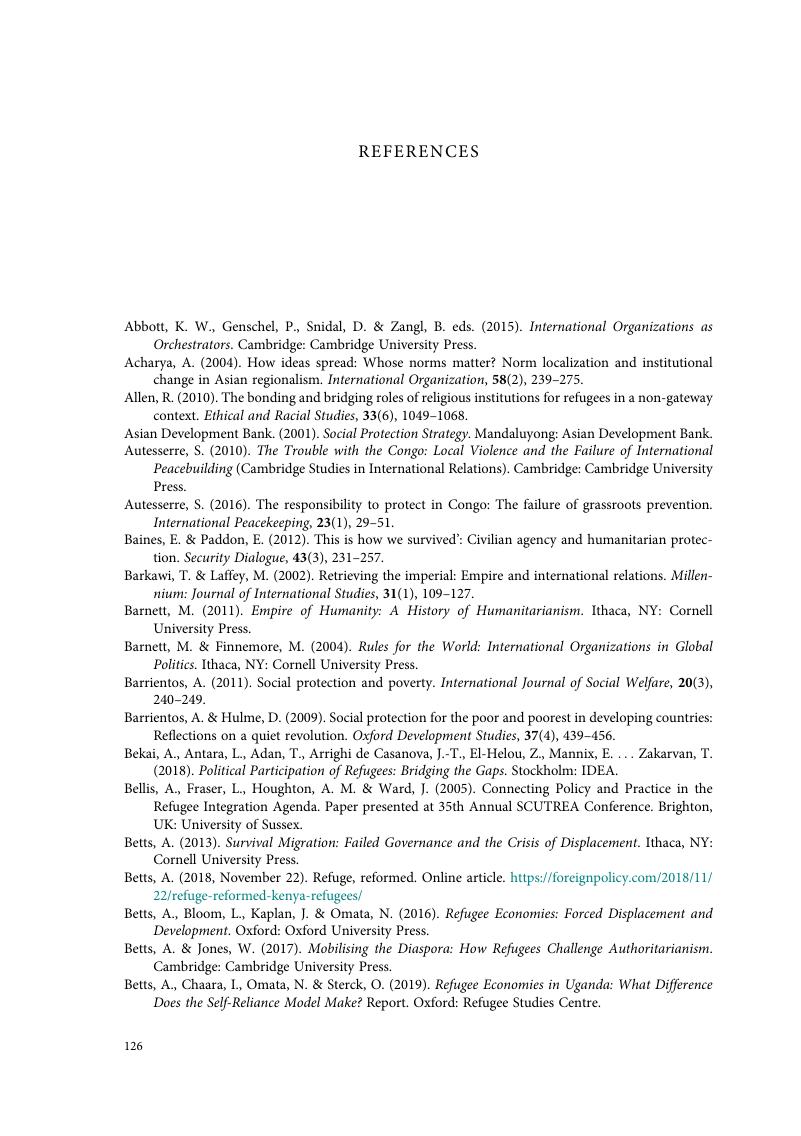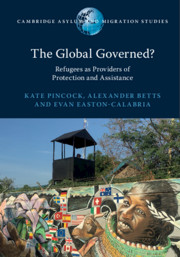References
Published online by Cambridge University Press: 06 March 2020
Summary

- Type
- Chapter
- Information
- The Global Governed?Refugees as Providers of Protection and Assistance, pp. 126 - 133Publisher: Cambridge University PressPrint publication year: 2020



